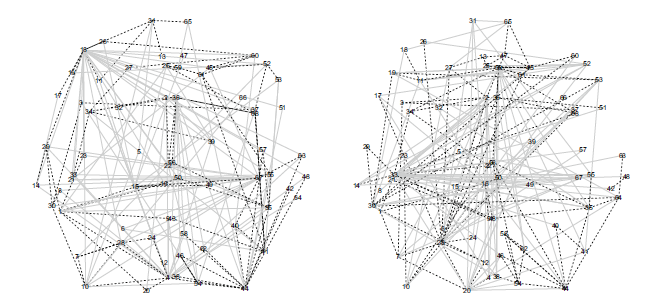Understanding dependency patterns in structural and functional brain connectivity through fMRI and DTI data.

Crispino, M., D’Angelo, S., Ranciati, S., and Mira, A. (2018).
Contributions to Neural Data Science, proceedings of Startup Research, Springer Proceedings in Mathematics and Statistics.
Neuroscience and neuroimaging have been providing new challenges for statisticians and quantitative researchers in general. As datasets of increasing complexity and dimension become available, the need for statistical techniques to analyze brain related phenomena becomes prominent. In this paper, we delve into data coming from functional Magnetic Resonance Imaging (fMRI) and Diffusion Tensor Imaging (DTI). The aim is to combine information from both sources in order to learn possible patterns of dependencies among regions of interest (ROIs) of the brain. First, we infer positions of these regions in a latent space, using the observed structural connectivity provided by the DTI data, to understand if physical spatial coordinates suitably reflect how ROIs are effectively interconnected. Secondly, we inspect Granger causality in the fMRI data in order to capture patterns of activations between ROIs. Then, we compare results from the analysis on these datasets, to find a link between functional and structural connectivity. Preliminary findings show that latent space positions well reflect hemisphere separation of the brain but are not perfectly connected to all the other structural partitions (that is, lobe, cortex, etc.); furthermore, activations of ROIs inferred from fMRI data are tied to observed structural connections derived from DTI scans.